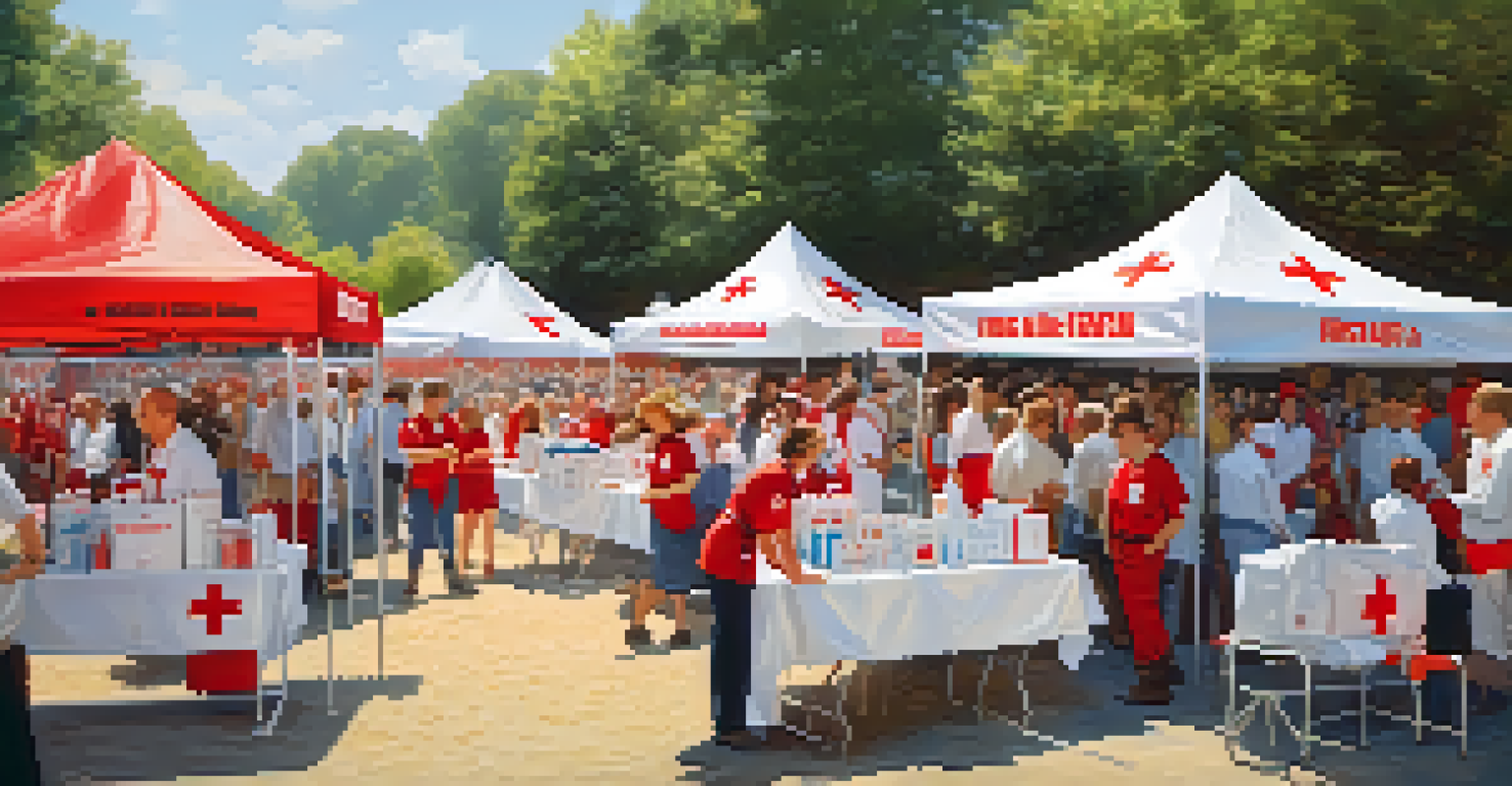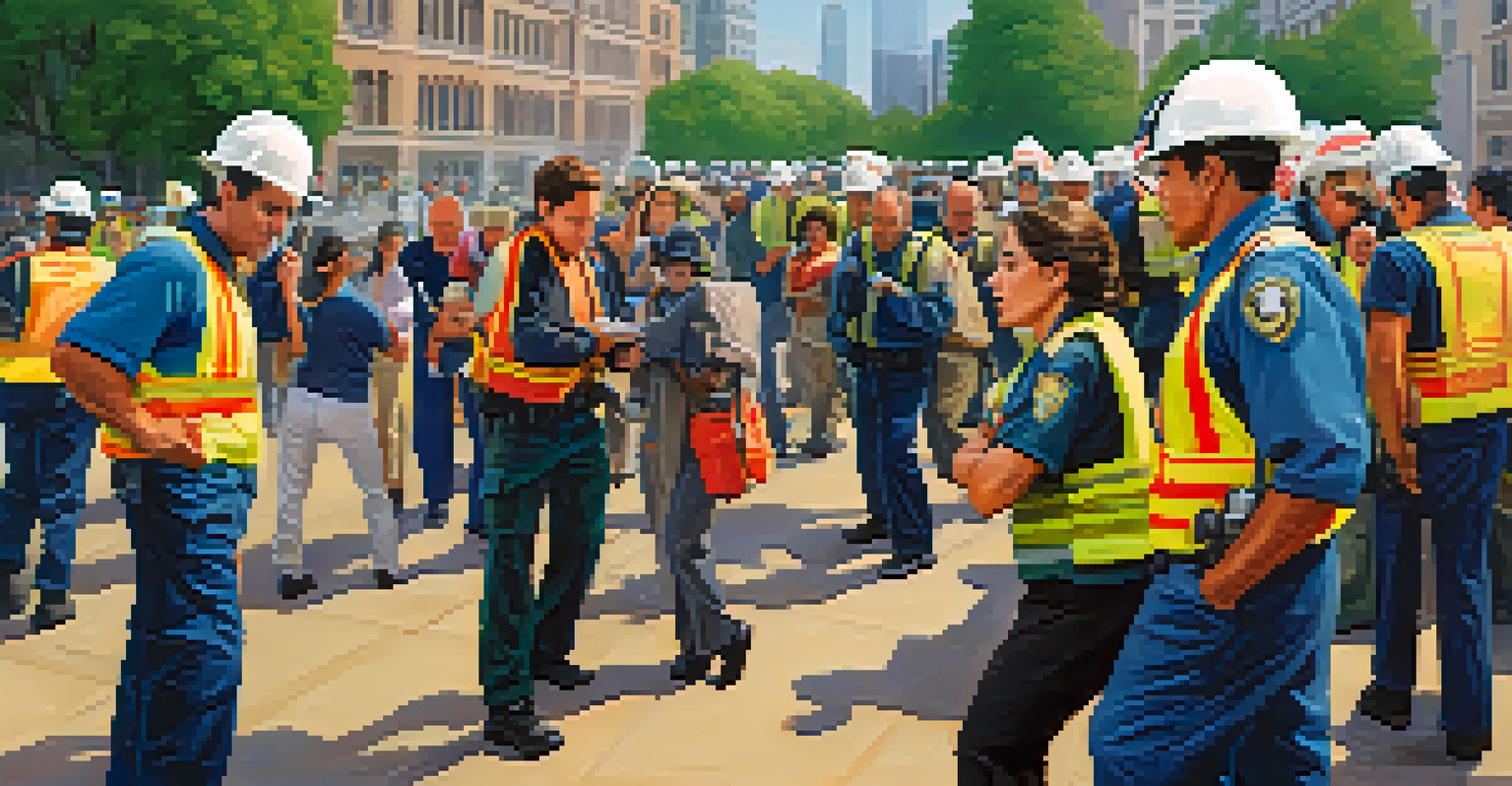Creating a Safety Plan for Activist Gatherings

Understanding the Importance of a Safety Plan
A safety plan is crucial for any activist gathering, providing a structured approach to ensure the well-being of participants. It helps in identifying potential risks and establishing protocols to address them proactively. By having a solid plan in place, organizers can foster a sense of security, allowing attendees to focus on the cause rather than potential threats.
Safety isn't just about what you do; it's about how you think.
Moreover, a well-defined safety plan can enhance the credibility of an organization. When participants see that safety is prioritized, they are more likely to engage actively and feel empowered. This not only encourages a larger turnout but also promotes a culture of responsibility among attendees.
Ultimately, a safety plan serves as a roadmap during gatherings, guiding organizers and participants alike through various scenarios. Whether it’s dealing with unexpected weather changes or responding to confrontational situations, having a plan can make all the difference in maintaining a peaceful and effective gathering.
Identifying Potential Risks and Hazards
The first step in creating a safety plan is to identify potential risks and hazards that may arise during the gathering. This could include anything from adverse weather conditions to the possibility of counter-protests or police intervention. Engaging in thorough research and discussions with past organizers can provide valuable insights into what to anticipate.

It's also important to consider the location of your gathering. Different venues can present unique challenges, such as accessibility issues or limited emergency exits. By analyzing these factors, organizers can tailor their safety strategies to address specific concerns relevant to the chosen site.
Importance of a Safety Plan
A well-structured safety plan ensures the well-being of participants by identifying potential risks and establishing proactive protocols.
Finally, gathering input from participants can enhance risk assessment. Encourage attendees to share their experiences and concerns, which can help in identifying overlooked risks. This collaborative approach not only enriches the plan but also fosters a sense of community and shared responsibility.
Developing Emergency Response Protocols
Once risks are identified, the next step is to develop emergency response protocols. These protocols should outline clear steps to take in various scenarios, such as medical emergencies, crowd control, or evacuation procedures. Having these guidelines in place ensures that everyone knows how to react when the unexpected occurs, reducing panic and confusion.
An ounce of prevention is worth a pound of cure.
It's essential to assign specific roles to individuals during emergencies. Designating a first-aid officer, a communications officer, or crowd managers can streamline the response process. When everyone understands their responsibilities, the group can act more cohesively, enhancing overall safety.
Practicing these protocols before the event can also be beneficial. Conducting drills or simulations helps participants feel more prepared and comfortable with the procedures. This preparation not only boosts confidence but also reinforces the importance of safety during the gathering.
Creating a Communication Plan for the Gathering
Effective communication is vital for a successful safety plan. Establishing a clear communication strategy ensures that all participants are informed about safety protocols and any updates during the event. Utilizing tools like two-way radios, group messaging apps, or designated signal systems can facilitate real-time communication.
It's also important to have a plan for communicating with emergency services if needed. Ensure that contact information for local police, medical facilities, and other relevant organizations is readily available. This not only speeds up response times but also reinforces a proactive approach to safety.
Communication is Key
Effective communication strategies during an event keep participants informed and enhance overall safety management.
Lastly, consider how you will communicate with attendees if plans change. Whether due to weather, safety concerns, or other unforeseen circumstances, having a backup communication strategy will keep everyone informed and minimize confusion.
Designating Safety Roles Within the Team
Designating safety roles within your organizing team is essential for an effective safety plan. Having clear responsibilities helps ensure that all safety aspects are covered and that everyone knows who to turn to during emergencies. This can include roles like safety coordinators, crowd managers, and first-aid responders.
When assigning roles, consider each person's strengths and experiences. For instance, someone with a medical background may be best suited for first-aid responsibilities, while someone with strong organizational skills can oversee crowd management. By playing to individual strengths, you create a more efficient and responsive team.
Additionally, make sure all team members are well-trained in their roles. This may involve training sessions, workshops, or even simulations to prepare for various scenarios. When everyone is equipped with the knowledge and skills to handle their responsibilities, the overall safety of the gathering improves significantly.
Incorporating First Aid and Medical Support
Incorporating first aid and medical support into your safety plan is non-negotiable. Having trained medical personnel on-site ensures that any injuries or health emergencies can be addressed promptly. This not only provides peace of mind for attendees but also demonstrates a commitment to their well-being.
It's also wise to have a designated first aid area that is easily accessible to all participants. Clearly marking this space and ensuring it is stocked with necessary supplies, such as bandages, antiseptics, and other medical essentials, can significantly enhance the response to health issues. Signage directing attendees to this area can further aid in quick access.
Evaluate and Adapt Post-Event
Post-event evaluations allow organizers to gather feedback and refine safety measures for future gatherings.
Finally, consider training volunteers in basic first aid and CPR skills. Even a few individuals equipped with this knowledge can make a significant difference in emergencies. Empowering attendees with these skills fosters a culture of care and preparedness within the gathering.
Evaluating and Adjusting the Plan Post-Event
After the gathering, evaluating the effectiveness of your safety plan is crucial for future events. Gathering feedback from attendees and volunteers can provide valuable insights into what worked well and what may need improvement. This reflection is key to enhancing safety measures for upcoming gatherings.
Consider holding a debriefing session with your organizing team to discuss the event. Discuss any challenges faced and how they were managed, as well as any unexpected situations that arose. This collaborative review helps identify gaps in the safety plan and allows for adjustments to be made.

Lastly, documenting the lessons learned can serve as a reference for future events. By continuously refining your safety plan based on past experiences, you contribute to a safer environment for all participants in future activist gatherings.